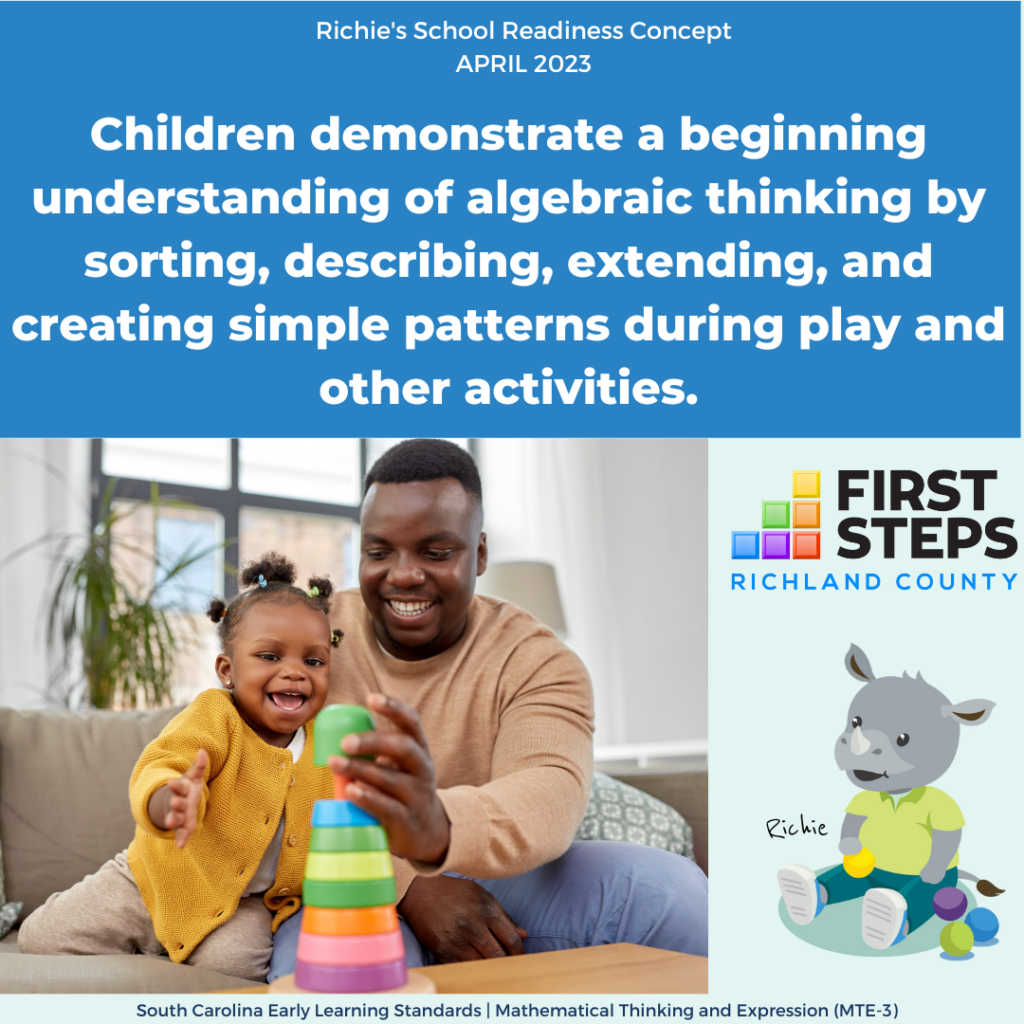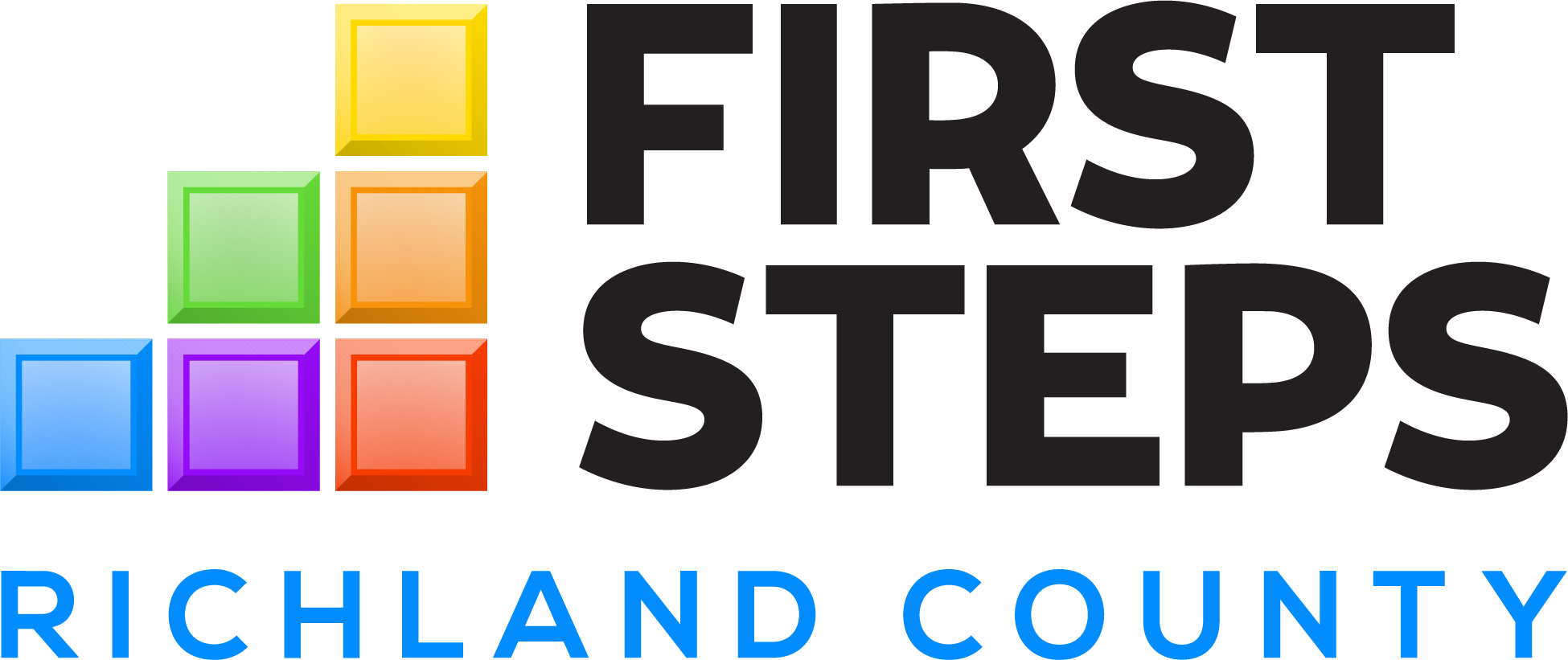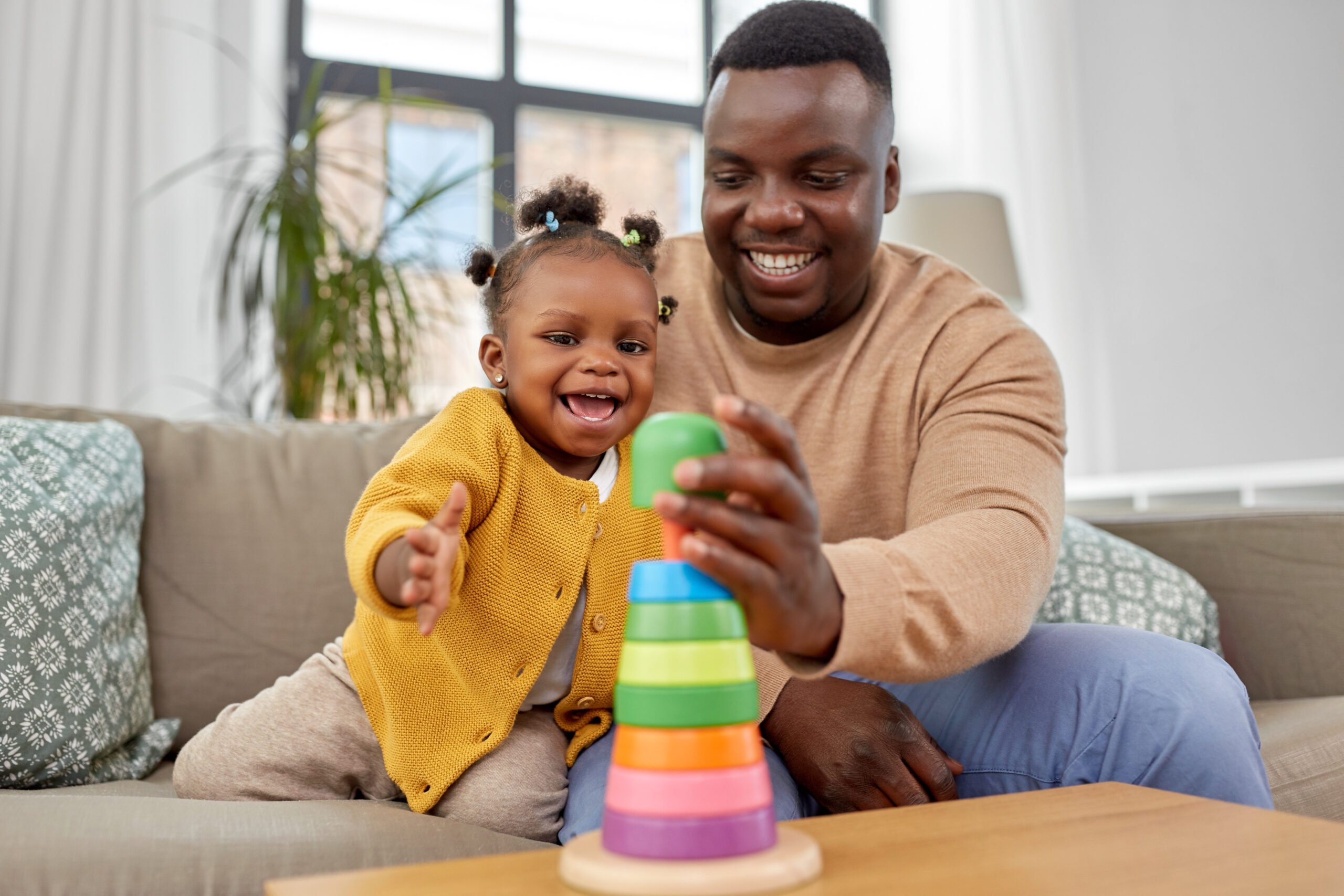
Each month, Richland First Steps selects one school readiness goal from the SC Early Learning Standards (SCELS) to spotlight throughout our programs for children, families, and child care providers.
This month’s concept comes from the Mathematical Thinking and Expression domain of the SCELS. Like all of the standards, there are developmental indicators that show a child’s progress on this goal at each stage:
Infants (Birth to 12 months)
- Emerging
Younger Toddlers (8 to 21 months)
- Show awareness of different categories during play (put balls in a box and dolls in a bed; give one friend all the cars and another friend all of the trucks when playing in the block area).
- Can follow along and imitate patterns of sounds and movement (for example, repeating a chorus in a song or clapping a simple rhythm).
Older Toddlers (18 to 36 months)
- Sort familiar objects into categories (cars with cars, plates separated from cups; rectangle blocks on one shelf and square blocks on another).
- Can follow along and imitate patterns of sounds and movement (for example, repeating a chorus in a song or clapping a simple rhythm).
Younger Preschoolers (36 to 48 months)
- Sort familiar objects into categories (cars with cars, plates separated from cups; rectangle blocks on one shelf and square blocks on another).
- Identify familiar objects as the same or different.
- Recognize simple repeating patterns (AB type patterns) and attempt to repeat or extend them during play (repeat a movement pattern during a song, extend a line of blocks in alternating colors).
Older Preschoolers (48 to 60+ months)
- Sort a group of objects (1-10) using one attribute (color, size, shape, quantity) with increasing accuracy (sort blocks by shape and place like-shaped blocks on the shelf; sort beads by color or another attribute).
- Describe, duplicate, and extend simple repeating patterns (two-part patterns) using concrete objects (look at a pattern of beads and tell what bead comes next in the pattern).
- Show beginning abilities to create simple repeating patterns.
Learn more:


